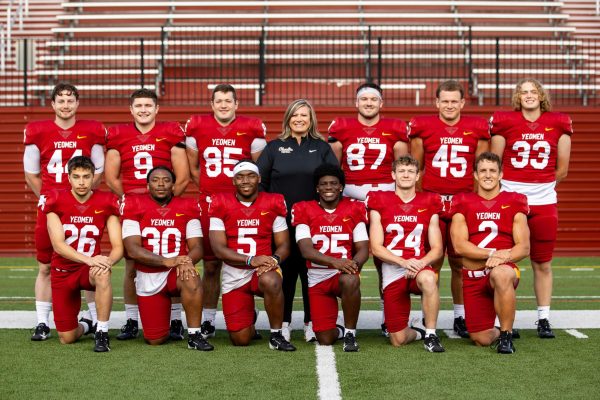Oberlin Golf Club Fails to Serve Oberlin Community
Photo Courtesy of Oberlin Golf Club
The Oberlin Golf Club is located on Pyle South Amherst Road.
I still remember the first time my dad took me golfing when I was about six years old. It was at a course somewhere near Oberlin and the holes were short enough for me to play on as a small child. It wasn’t the most high-end course, and we played there a few times until one day we showed up and the grass was uncut, and the small building where you paid for the round was abandoned. Those early times learning how to play golf with my dad were fun, and it was before I experienced some of the negative sides of the sport’s culture.
I continued to play golf casually over the years at public courses in the area, but I simultaneously became aware of issues with the sport. Something that specifically sets golf apart from other sports in a negative way is the high cost of play, an issue that is very visible within the City of Oberlin.
As someone who has played golf and lived in Oberlin nearly my whole life, you might think I would have played at the course located one block from my childhood home. However, the staggering cost of membership at the Oberlin Golf Club put playing there completely out of the question. The cost for a one-year membership is $3,899, and there is also a $2,500 initiation fee. If you wanted to play at the course, you’d be down over $6,000 after your first payment. The course at the Oberlin Golf Club looks better maintained than any course I have played on. Still, because of that astronomical price, it is clear that its main purpose is to provide a place for some of the wealthiest people in the area to do PGA cosplay and participate in events and tournaments that mimic professional golf. There is no chance of social interactions between people of different financial backgrounds because there is no way for a person with an average income to be a member. The existence of a course like this does little for the growth of the game and little for a community like Oberlin, where the median household income as of 2020 was $49,000 per year. The presence of food service in the clubhouse also suggests that the club does not have a positive impact on the business of Oberlin restaurants.
Personally, the only people I knew who had gotten the chance to play at the course were mostly older College faculty with paid memberships, or those who had been invited to play just once as a guest.
The history of the club is tightly connected to the College, but somewhere along the way it shifted from fostering an inclusive athletic community to a foray into the elitist golf world. According to the club’s site, it was started in 1899 with Henry W. Matlack — a former professor of organ and harmony — as its first president, and the first nine holes were designed in part by students and townspeople. The original fee to play was 25 cents — about $9 today adjusted for inflation. A few decades later, the club started to trend in the direction of exclusivity. After reaching an agreement to lease more land from the College in 1916, the course was reconstructed. Despite the updates and an expansion from nine to 18 holes in the 1950s, the club struggled financially in the mid-20th century and saw membership of Oberlin residents decrease.
It responded by increasing membership costs, which has led to its current state as an expensive, luxury golf club. Visitors to the club’s website are immediately met with a slide boasting “a rich history” of a “private club tradition,” before inviting readers to explore the course’s “heritage.” The focus throughout the site on the course’s good old days, while a fascinating documentation of its history, emphasizes the club’s focus on the past rather than prioritizing adapting to Oberlin’s present culture and demographics. While most of the history documented on the club’s website appears honest, it ends with an unconvincing statement:
“OGC persists as a relatively attractive bargain to a large cross-section of players in Lorain County and several adjacent counties as well,” the site reads.
It is quite possible there would be no Oberlin Golf Club if it had not made price alterations decades ago, but having no golf club may not necessarily be a bad thing. As it currently exists, Oberlin Golf Club does not appear to serve a majority of Oberlin residents, and takes up huge swaths of land that could be enjoyed by community members if something else — or even nothing at all — was in its place.







